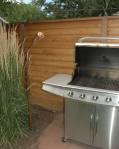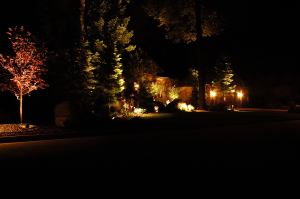One of the things we offer is a free nighttime demonstration so that you actually get to see what a particular lighting design will look like for your home and property – prior to an installation. That eliminates all of the guesswork and surprises – and you will know exactly how much you will have to invest to achieve that desired lighting effect.
Most of our typical lighting installations in Colorado range in price between $3,500 and $6,500. Not surprisingly, most homeowners have no idea how many lights they may need or want – or what their investment range might be until we do the evening lighting demonstration. And that’s perfectly OK because we do not want you to purchase a lighting system sight unseen.
Additionally, we do our nighttime demonstration for these other reasons:
- It is your house, not our’s – and you know best how you would like to have your house and property illuminated in the evening.
- Exact placement of the fixtures can be determined in order to safely light steps and other hazards, and to effectively light architectural features.
- We can show you several different lighting options that you may not have considered previously.
- The evening lighting demonstration is an event that your entire family can participate in and provide input to the lighting design.
Here is what you will see.
Filed under: Free outdoor lighting demonstration, Garden Lighting, Home-Community Security/Safety, Residential Lighting, Security/Safety | Tagged: architectural lighting, colorado outdoor lighting, colorado springs outdoor lighting, deck lighting, denver outdoor lighting, evening lighting design demonstration, fort collins outdoor lighting, garden lighting, Home-Community Security/Safety, landscape lighting, lighting design, low voltage lighting, outdoor lighting, professional lighting system, Safety | Leave a comment »

































